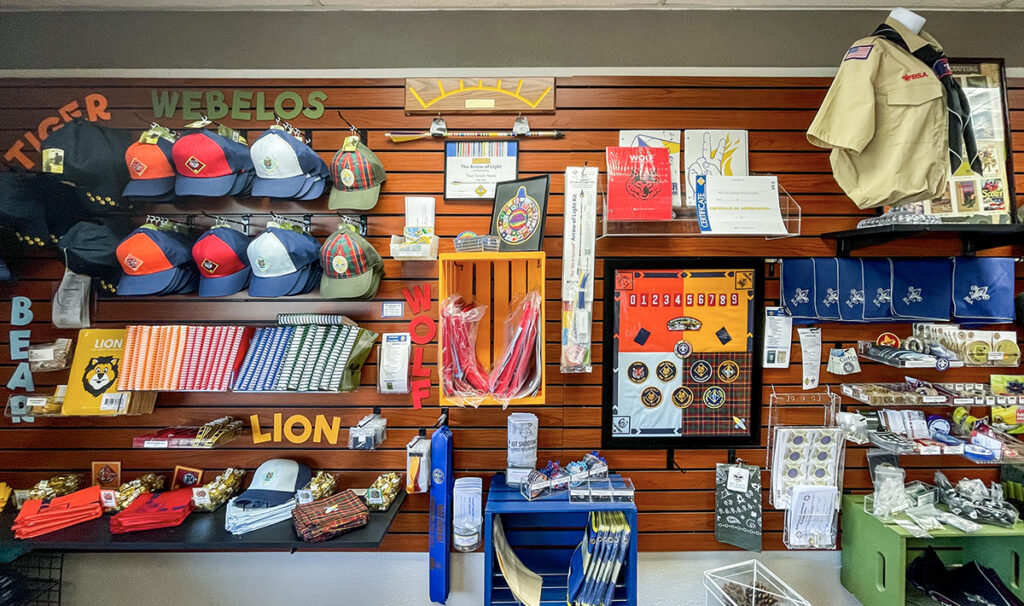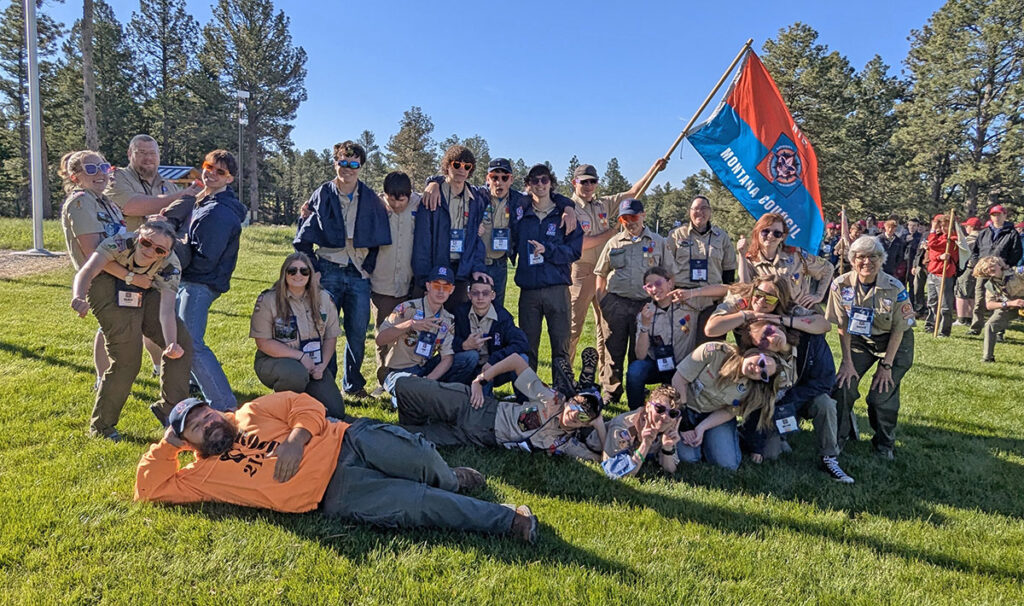
Nestled in sleeping bags tucked into the confines of Hole in the Wall – a geologic formation among the White Cliffs skirting the Missouri River in the Upper Missouri Breaks National Monument – Venturing Crew 2526 hoped to escape the irksome wildlife.
This stretch of the wild and scenic Missouri River has changed little since Lewis & Clark first explored it in 1805. The Crew took refuge here from pesky raccoons, chattering nighty while attempting to reach food hung safely out of reach from bear, and local cattle’s incessant early-morning mooing.
Three Scouts, four adults, and three canoes put in at Ft. Benton, the oldest continually occupied settlement in Montana. The original fort, the last fur trading post on the Upper Missouri River, attracted steamboats – from one of which Montana’s first governor, Thomas Meagher, met his demise – carrying goods, merchants, gold miners, and settlers.
After visiting the Fort Benton Museum, the Crew learned they would cover the same ground as the historic Lewis and Clark expedition, whose purpose was to locate routes connecting the continental interior to the Pacific Ocean.
The Crew prepared for the trip by honing their swimming and canoeing skills on Bozeman Pond, which proved less challenging than the Missouri River. Requirements for their 50-miler Patch were catching fish, skinning, and cooking them for meals. They also pumped river water and purified it for drinking. The service requirement included a conservation project of trail maintenance, watering saplings, and a flag retirement ceremony.
Along the route, they hiked into a slot canyon, discovering pictographs made by historic Native Americans. A subsequent hike revealed tipi rings – clusters of stone circles found on favorable hunting grounds – used by Native Americans to hold down tipis and to keep the lodge warm and dry. The final hike out of St. Regis was a 12-mile trek along the Hiawatha Bike Trail.
At the end of their journey, they visited the Lewis and Clark Museum in Great Falls, where they read excerpts from the original expedition and compared them to their personal experiences.
According to Crew leader Deana Bailey, by the end of the trip, inexperienced Scouts improved their paddling ability and everyone gained confidence in survival skills by providing their own food and water for several days.
They successfully met all the challenges that camping and canoeing 50 miles presents while learning about and experiencing firsthand the struggles of that first expedition by Lewis and Clark.
Maybe of equal importance, instead of screens, daily entertainment was watching eagles expertly maneuvering among the rock formations of the Missouri Breaks.




